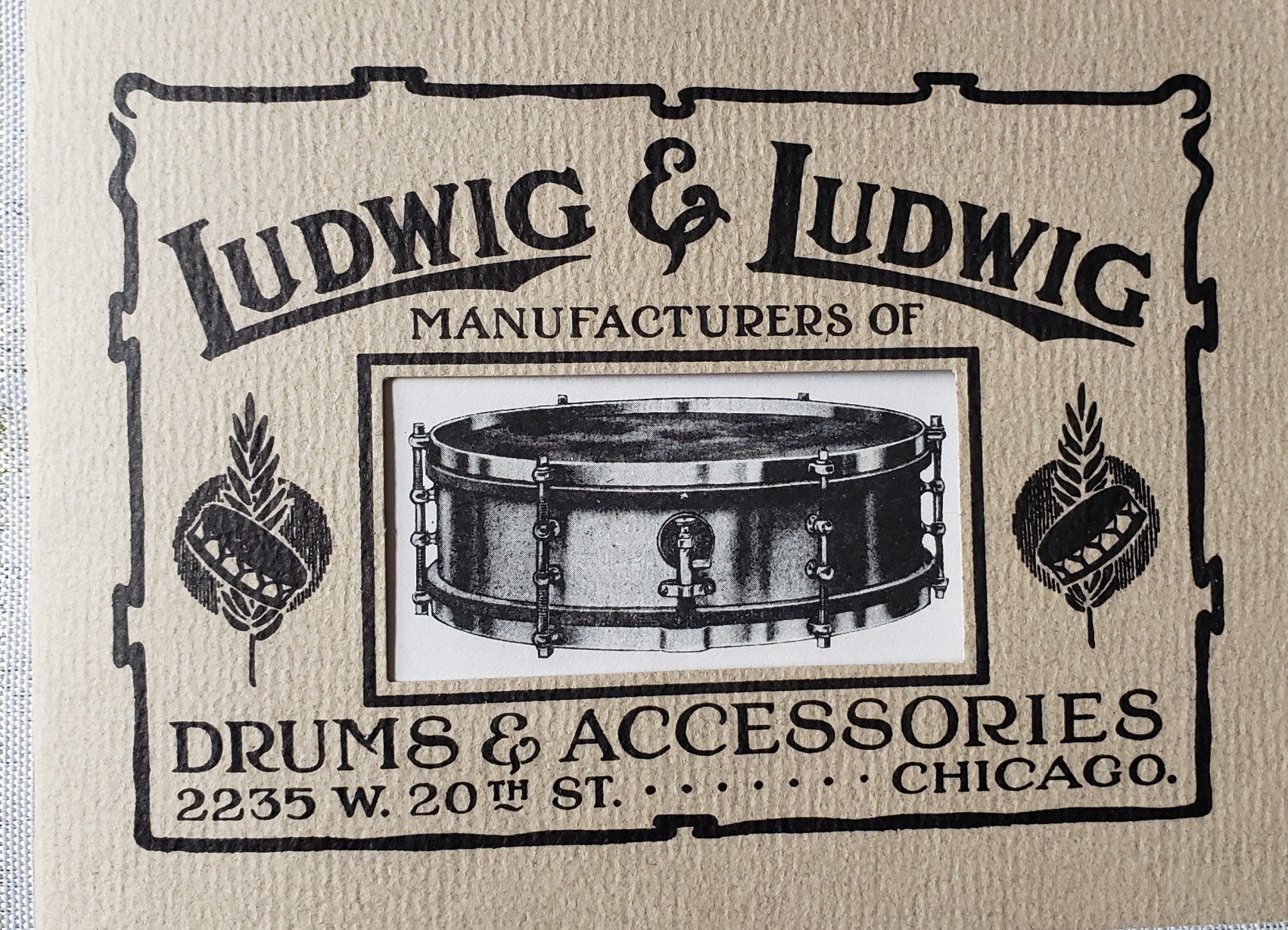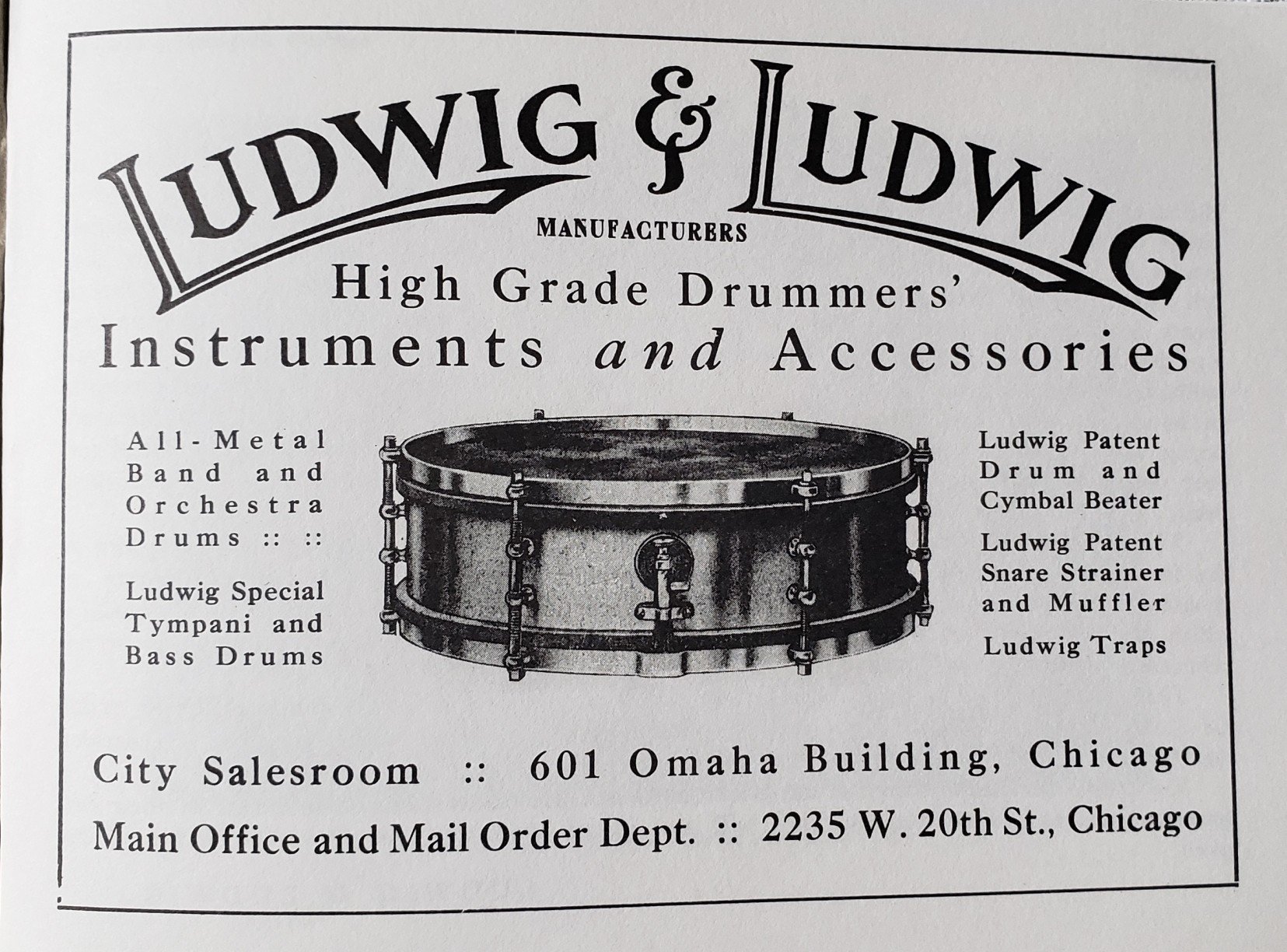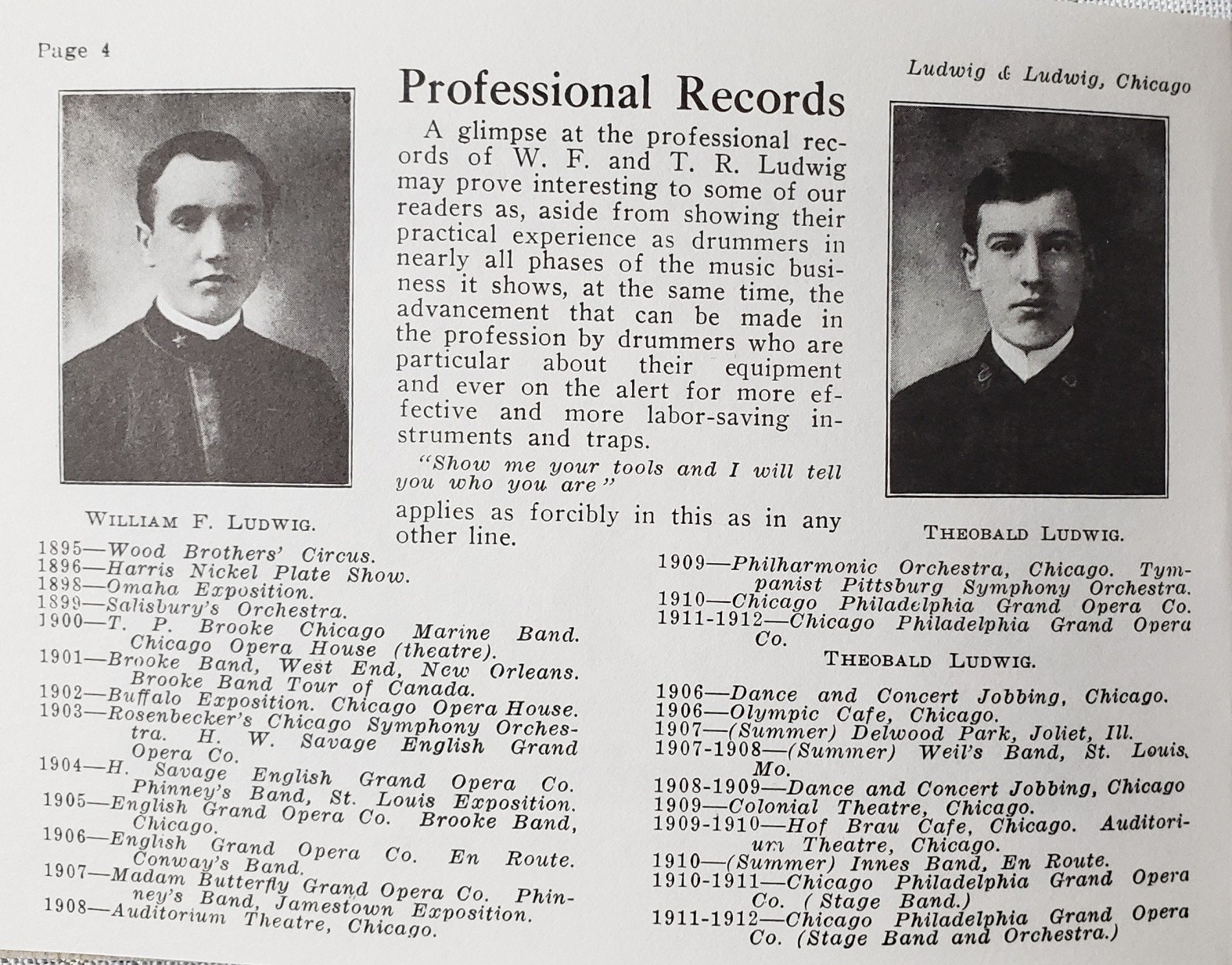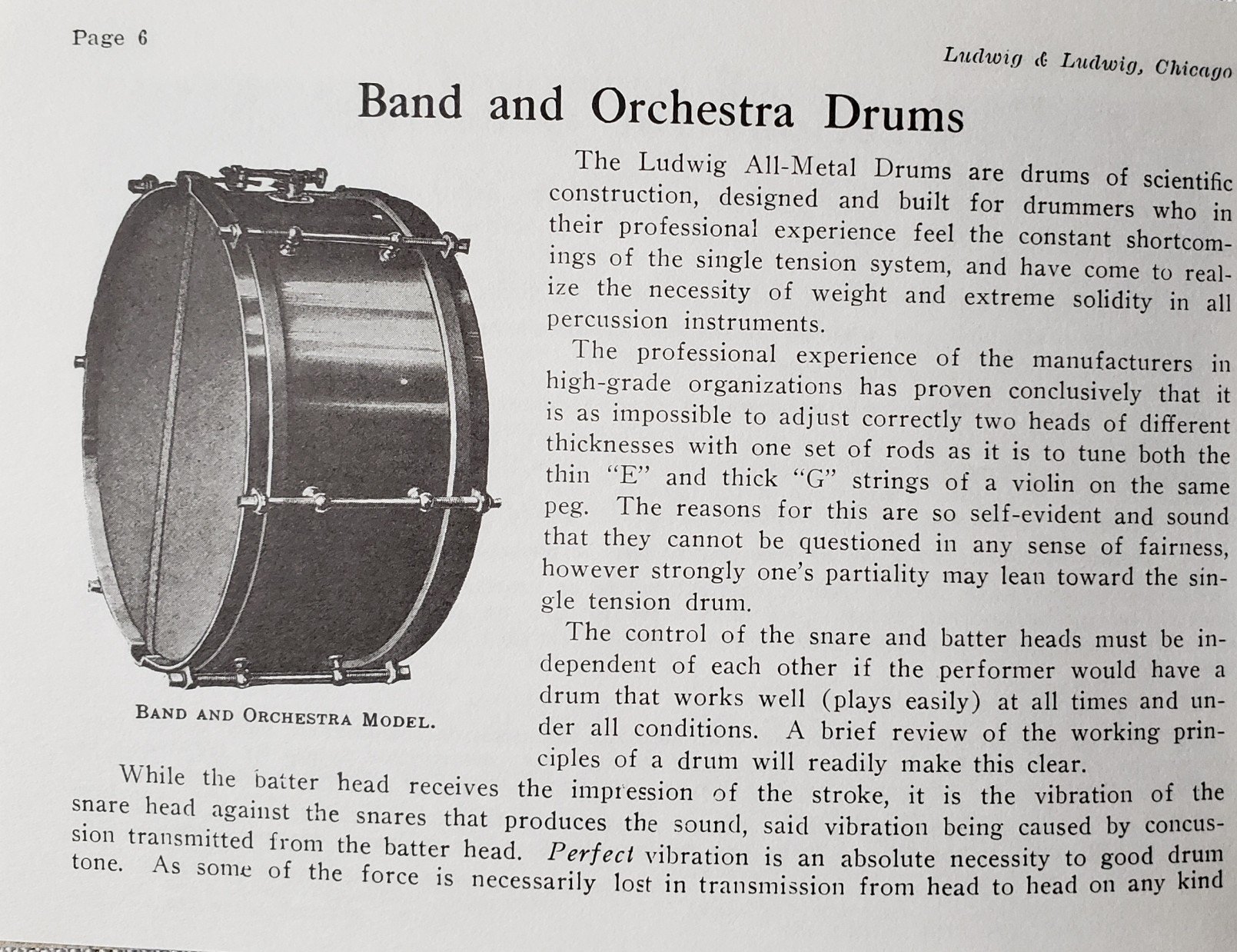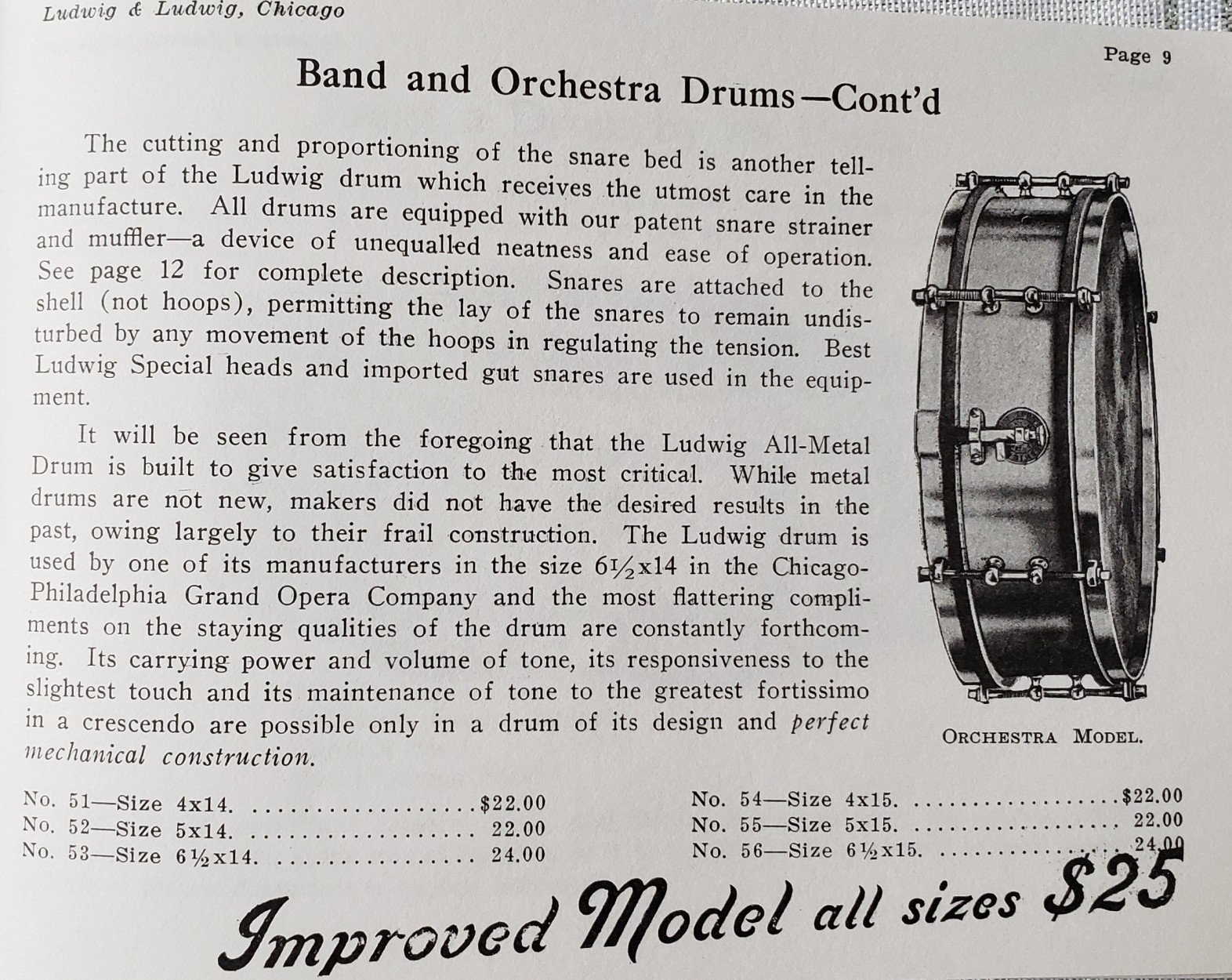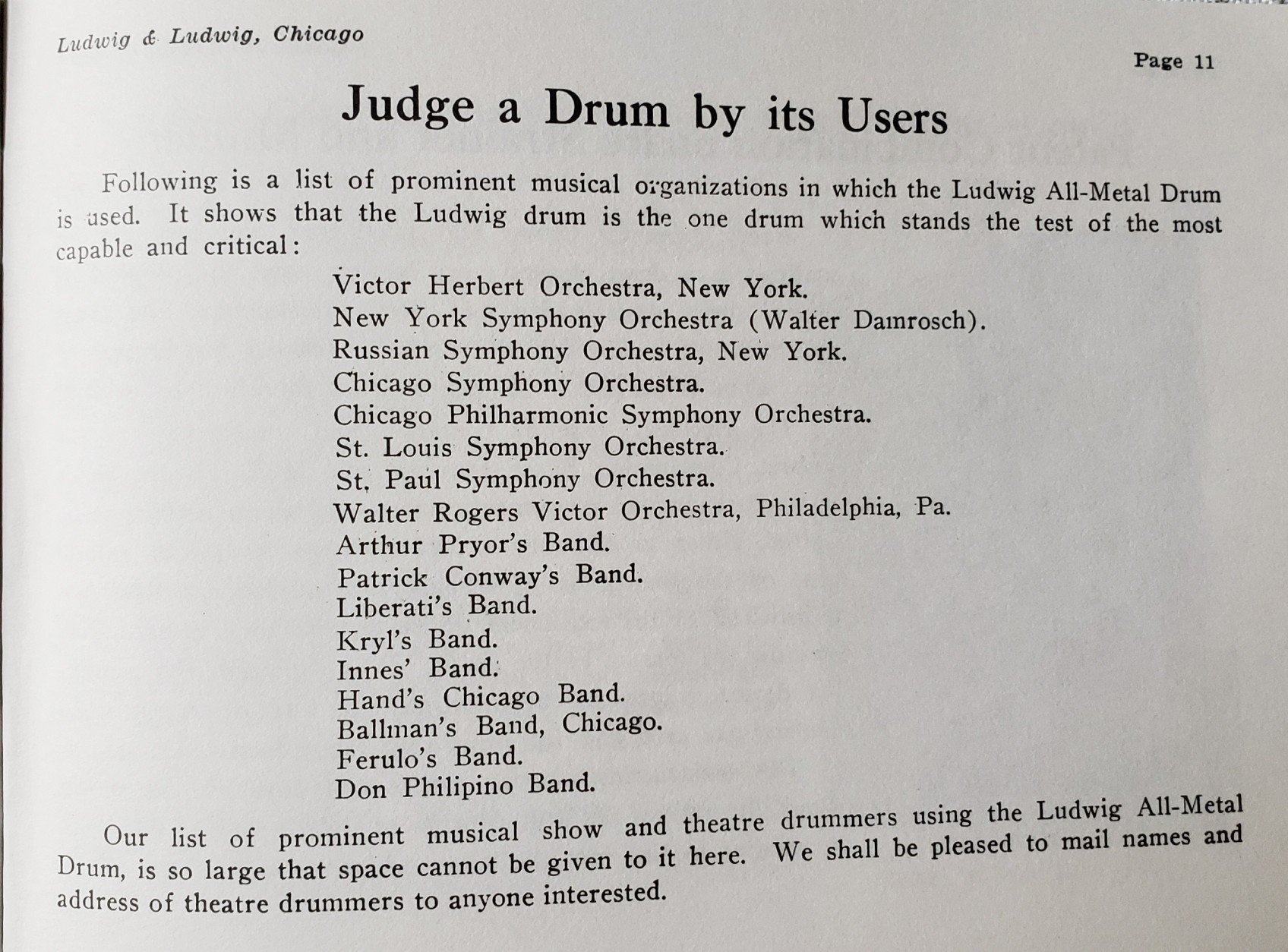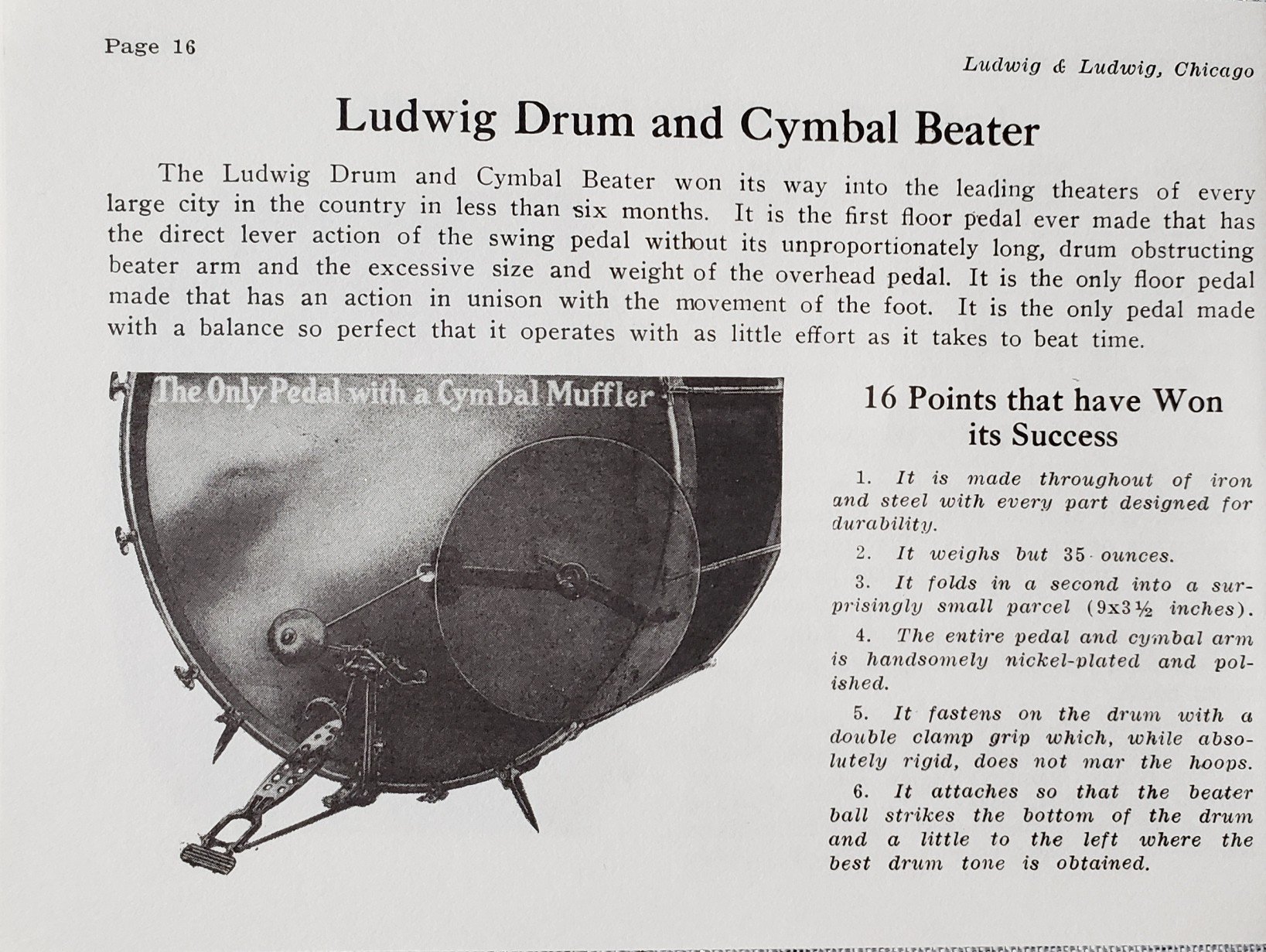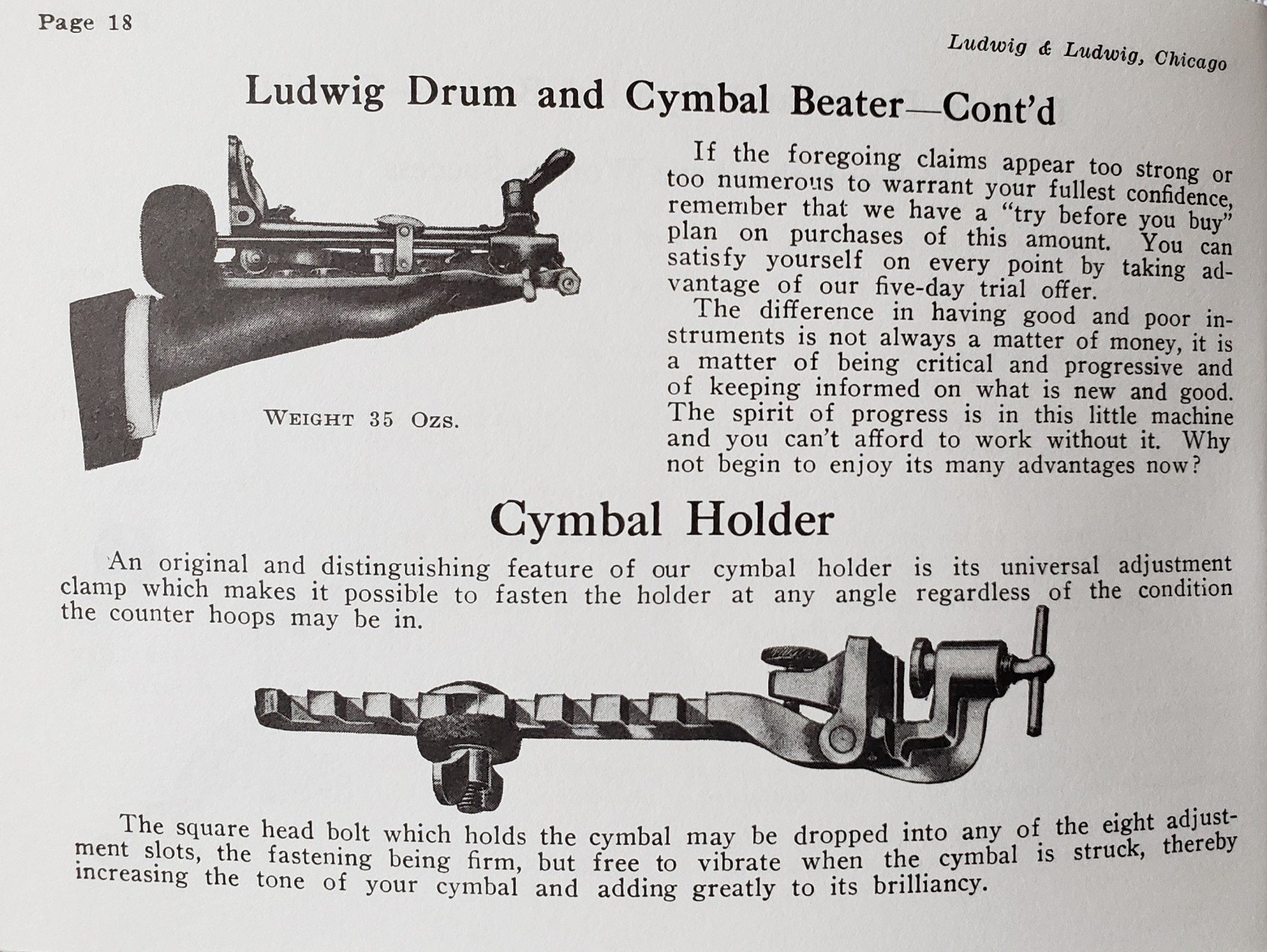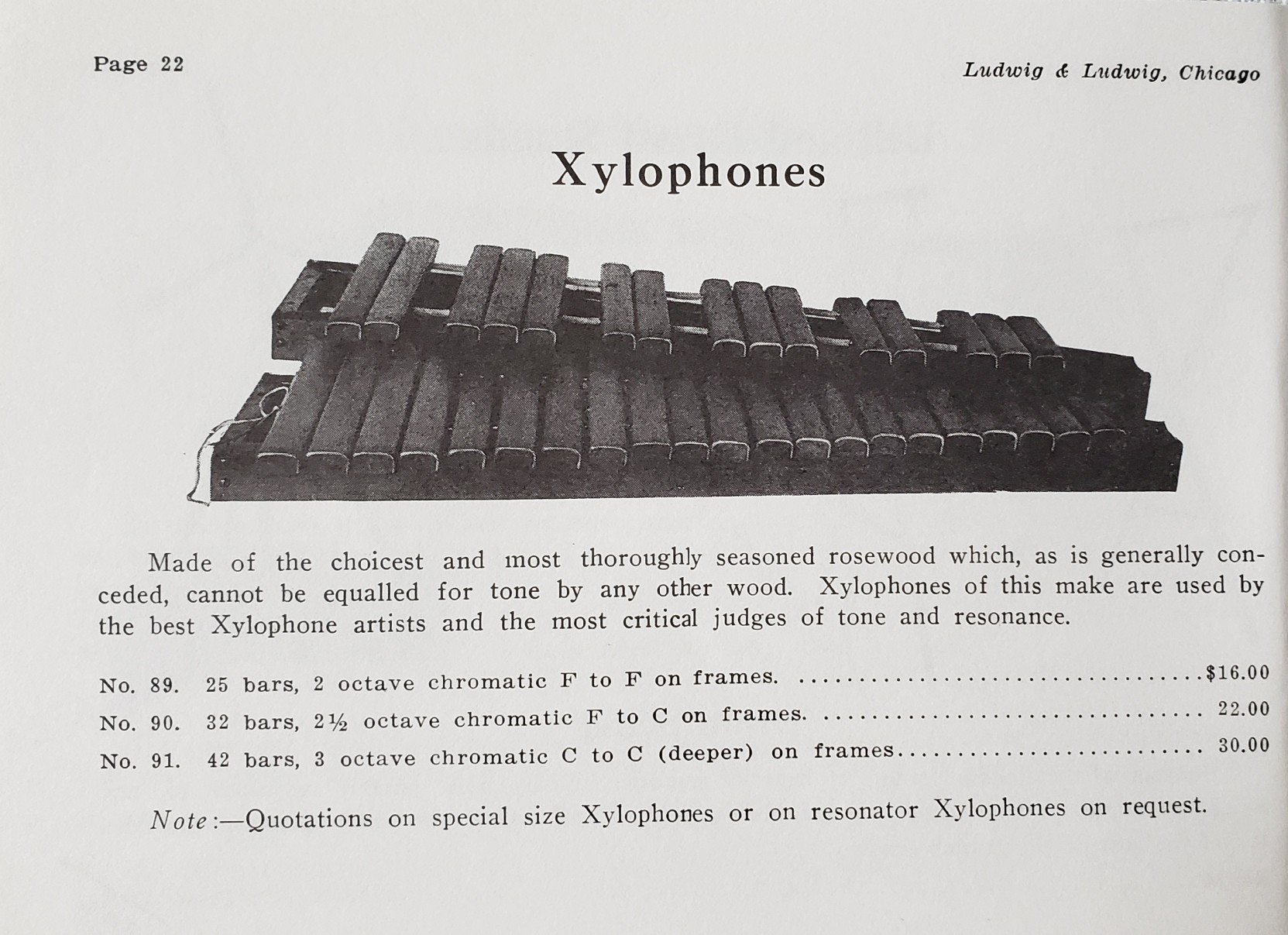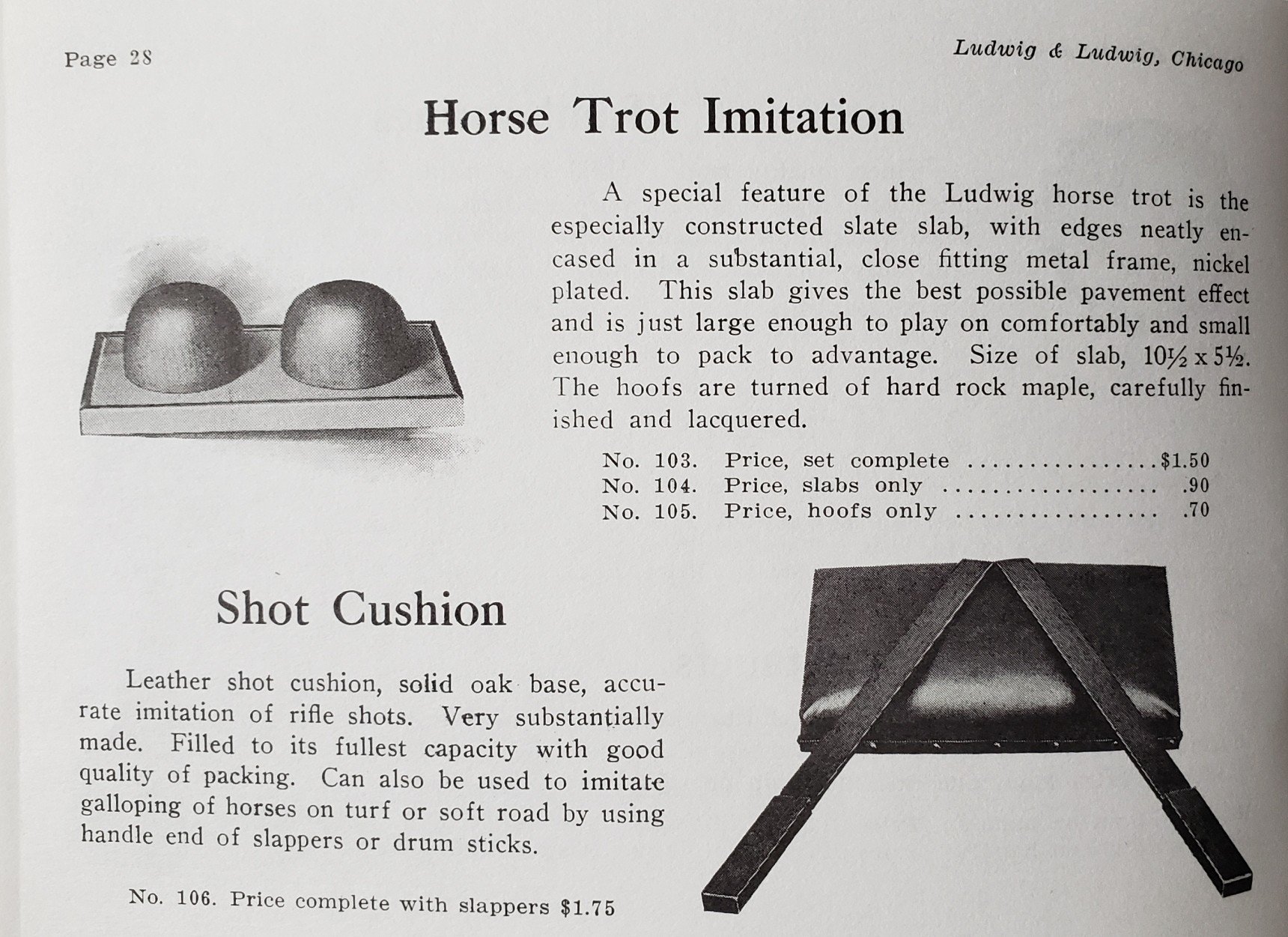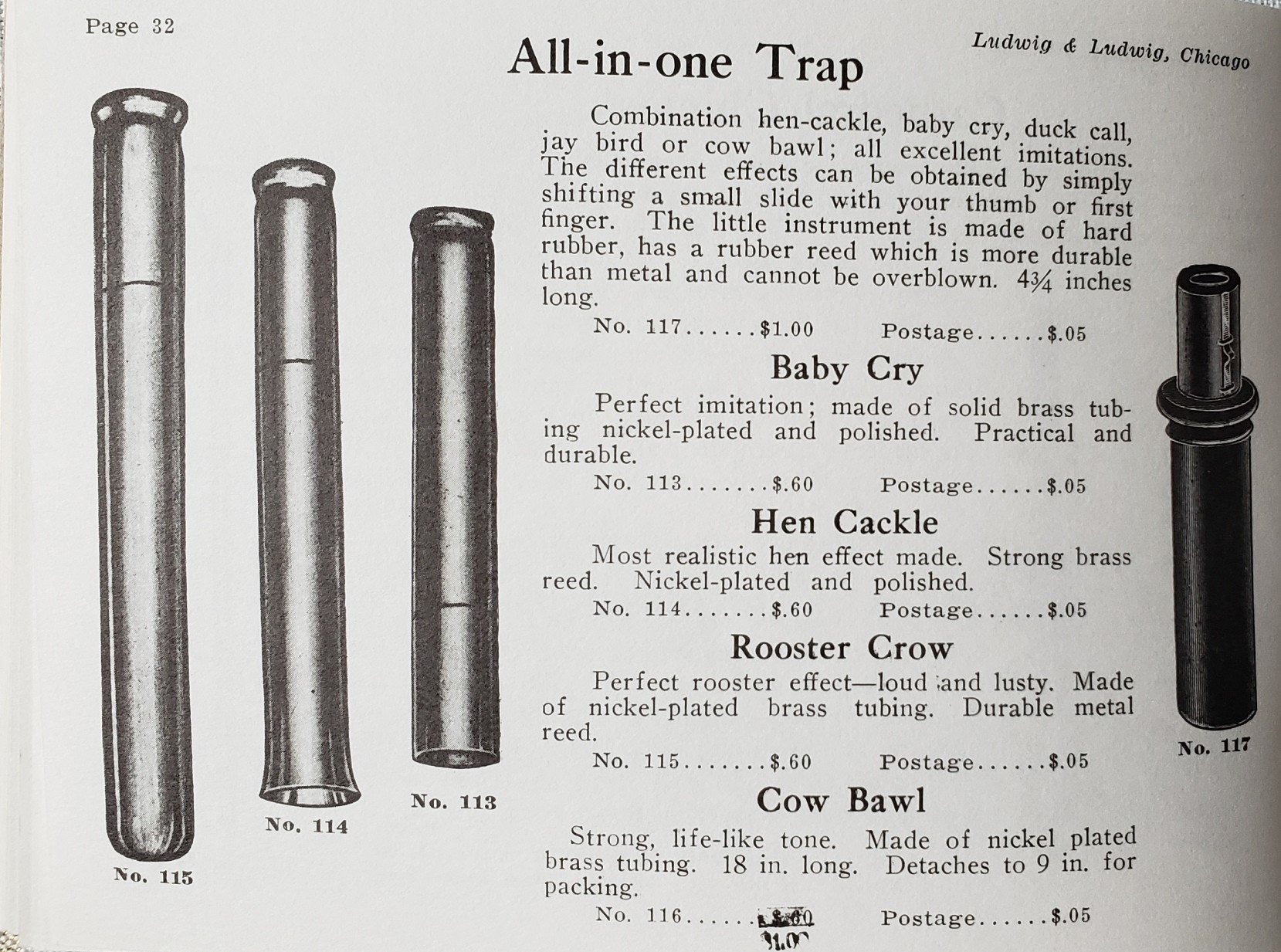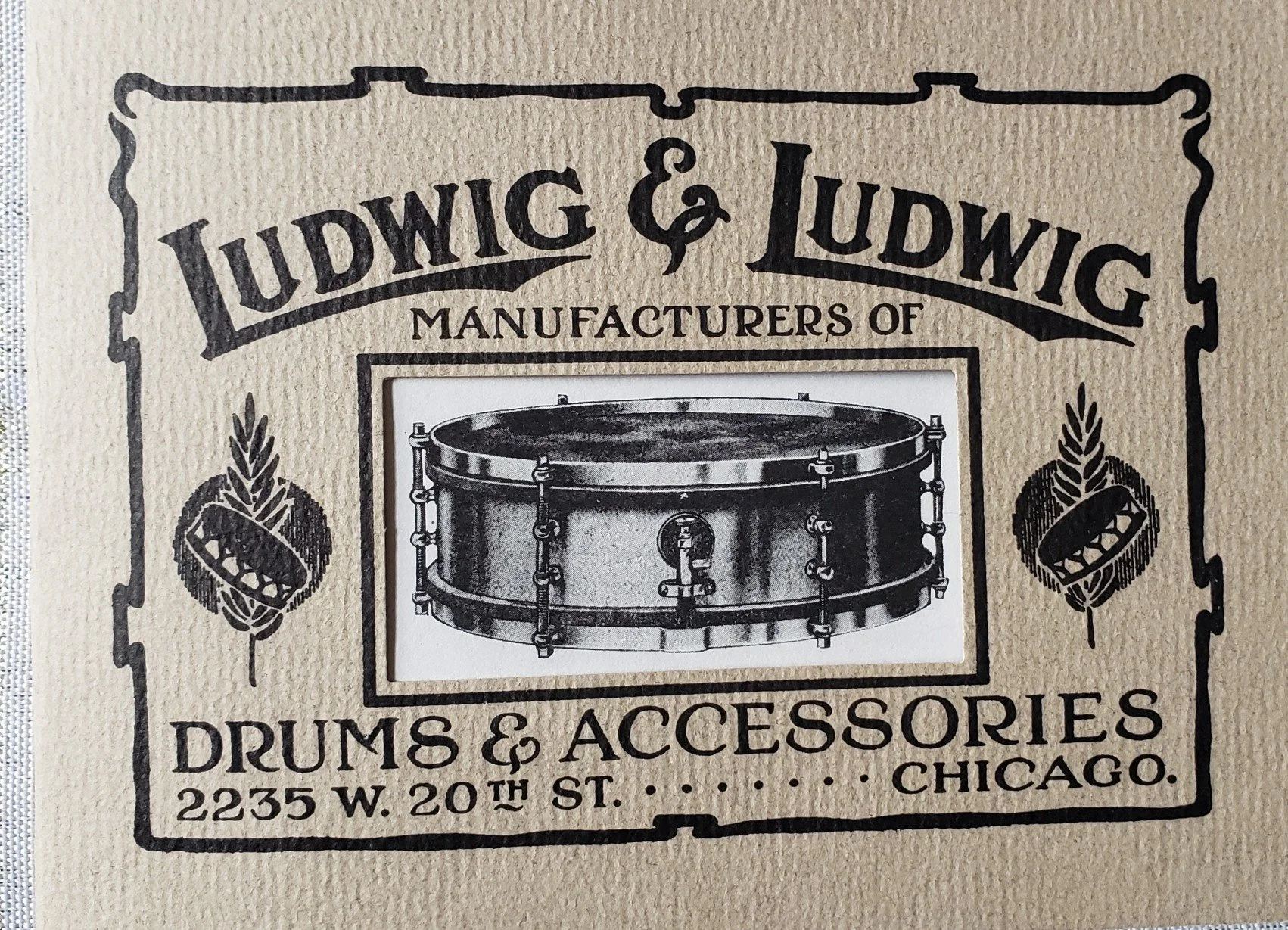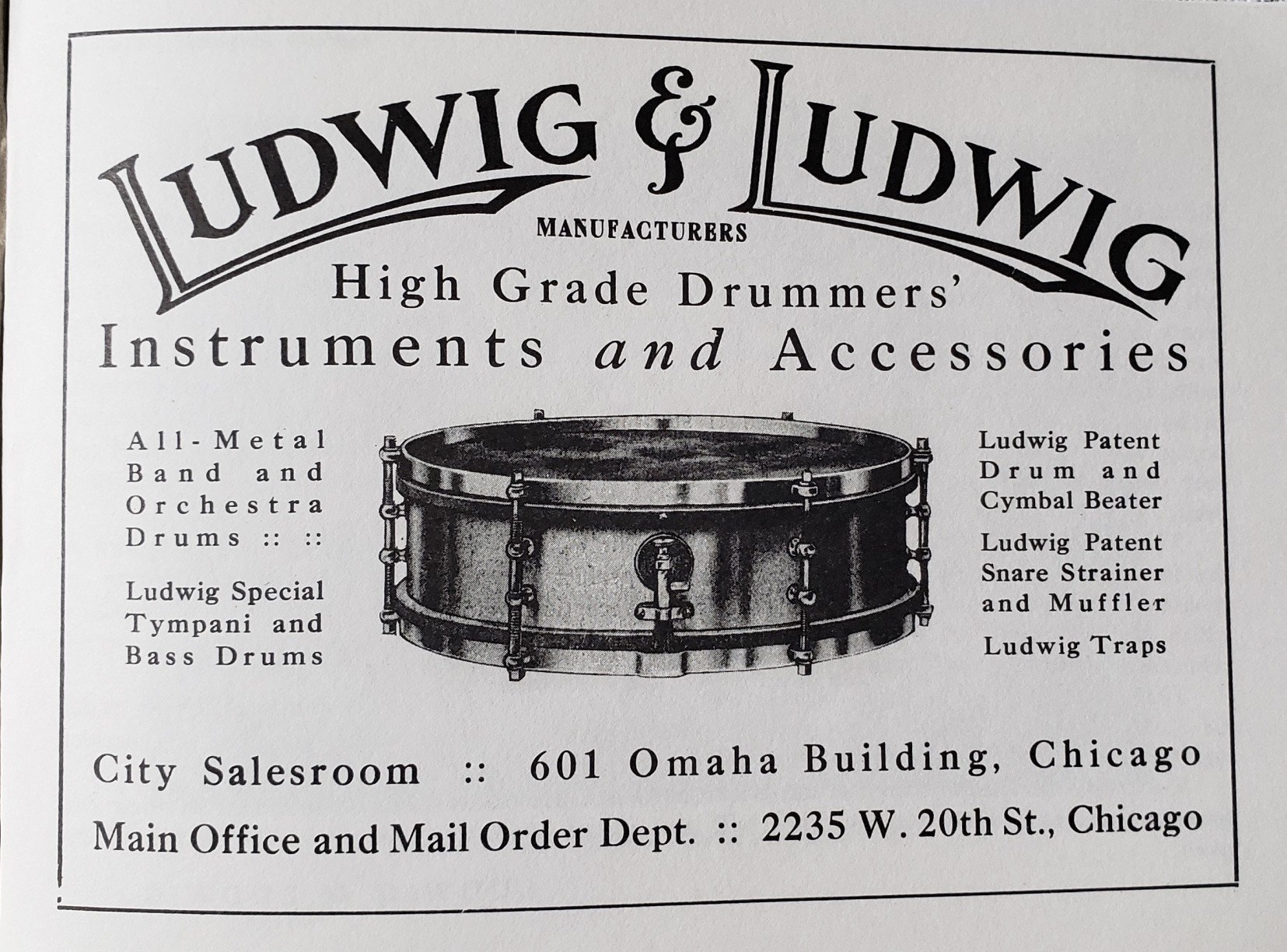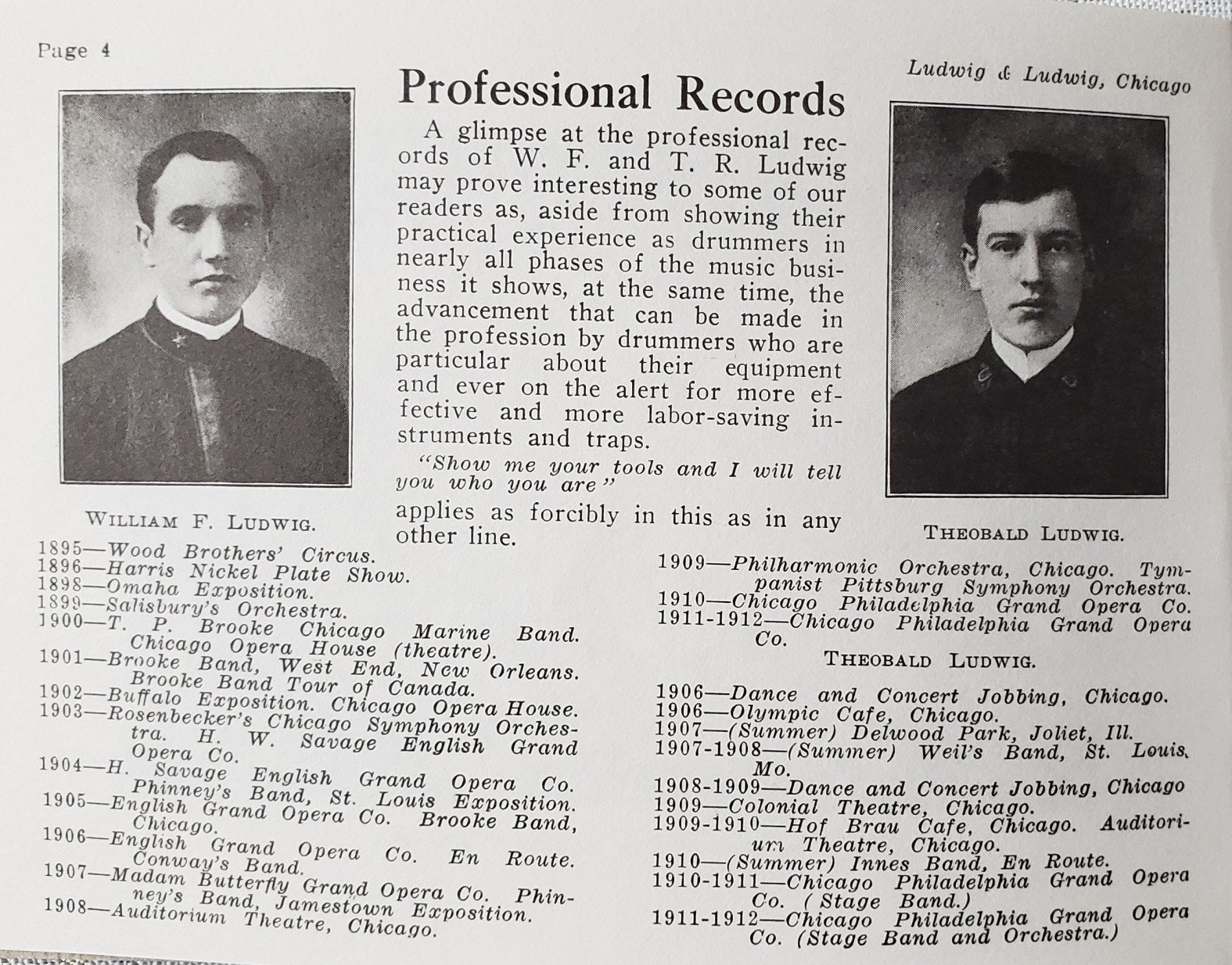Everyone knows that Ludwig & Ludwig was founded in 1909 by William F. and Theobald Ludwig in Chicago. The origins of the company were initially founded on a practical and functional bass drum pedal. But the company also sold many percussion sound effects to the theaters of the era.
The Ludwigs emigrated from Germany and became proficient percussionists. William F. Ludwig always admired the metal snare drums that were made in Germany. But it was not till a few years after the company started that Ludwig & Ludwig ventured into manufacturing a metal shell snare drum.
By 1912, the Ludwig & Ludwig Drum Company were ready to market their metal shell snare drum, bass drums, bass drum pedal, sticks, mallets, tympani and a host of percussion accessories. (Note that the y was used to spell tympani in this era). Hence, a need arose for a small printed catalog to market their offerings. The printed size they chose was 6” by 4.5” so that the catalog could be produced cost effectively and so that the drummer could easily carry this pocket-sized catalog and use as a quick reference.
At this time, Ludwig & Ludwig was located at 2235 W. 20th St., Chicago, IL and they even had a city sales office at 601 Omaha Building in Chicago. In my opinion, the Ludwig brothers were on the cutting edge of understanding marketing and the die was cast for this first catalog that also continued through the years of the company’s history.
The front page of the catalog used a new technique with a cutout to show the new Ludwig metal shell snare drum in a framed setting that was actually printed on the 2nd page and shown through to the front cover. Photos were black and white only and very rough, by modern standards.
As with all Ludwig catalogs, words did the describing first with photos to support. William F. Ludwig was quite the wordsmith. He would describe their company’s reason for being, building up the company’s expertise. Personal credibility was also an important factor as both William F. Ludwig & Theobald were skilled percussionists as well as business leaders. So they would list their professional musical accomplishments.
The Metal Shell Snare Drums were called Band & Orchestra Drums. What was unique is that tension of the drumhead could be adjusted on the top and bottom head separately. This was a significant improvement in drum tuning.
The Metal Shell Snare Drums were available in a surprising 6 different sizes. There were 3 - 14” diameter metal shell snare drums with depths of 4”, 5” & 6.5”. Plus 3 - 15”diameter snare drums in depths of 4”, 5” and 6.5”.
Having these drums used by the top bands and orchestras of the day was essential to their success into the market. A page in the catalog states, “Judge a drum by its user’s.” The beginning of drum endorsements right there in 1912. Tis the same today.
Several pages of the 1912 catalog featured all the attributes of the Ludwig & Ludwig Bass Drum Pedal, which in that era also included a cymbal arm to strike a cymbal, attached to the bass drum.
1912 was an era of music that was more band & orchestra based. So Ludwig & Ludwig sold both a 2 oct and 2.5 oct set of steel bells. Aluminum had not been invented yet. Even rosewood xylophones were made in ranges of 2, 2.5 & 3 octaves.
The Ludwig brothers were timpanists also and with the help of William F. Ludwig brother-in-law, William Danly, they created a pair of copper bowl tympani in 25” & 28” sizes that were hand tunable with large T-handles.
The rest of the Ludwig & Ludwig 1912 catalog features many percussion accessories, sound effects drumsticks, mallets, cases, drumheads and drum parts.
You will see the origin of drumstick model number and letter indications with the drumstick listing made in both hickory and rosewood. The Ludwig & Ludwig thin drumsticks were a model 1, medium diameter sticks were designated model 5, but heavier sticks were designated model 2. Orchestra models carried the letter designation of model “A”, while band models were marked “B”. Band “B” marked sticks I assume were heavier than “A” orchestra marked models.
Being able to produce natural sound effects like horses hoofs, train sounds, whips, was so essential in theater productions. Plus Ludwig distributed a full range of whistles from bird sounds to boats and train whistles. Some of these were made by Ludwig, but many they purchased from other manufacturers and distributed to their market.
A very interesting product listing in the 1912 catalog was cymbals and gongs. You see for the first time, Genuine K. Zildjian & Cie Turkish Cymbals. These were available in pairs or singles in a very limited diameter range from 12” thru 16”. In the spirit of an economy line of cymbals, they also offered Italian imported “imitation Turkish cymbals” in sizes 12” thru 15”. These were less than half the price of the K. Zildjian’s. The concept of the large ride cymbal did not exist yet.
So that’s a brief explanation of the Ludwig & Ludwig 1912 catalog. They were ahead of their time then in leading the drum business and the tradition continued when William F. Ludwig II took the marketing reins of the company into the 1950’s, 60’s & 70’s. The printed Ludwig Drum Catalog was a brilliant marketing tool that built a market for future generations as Ludwig celebrates their 116th year of continuous business in 2025.
Jim Catalano – Ludwig 1983 - 2019

